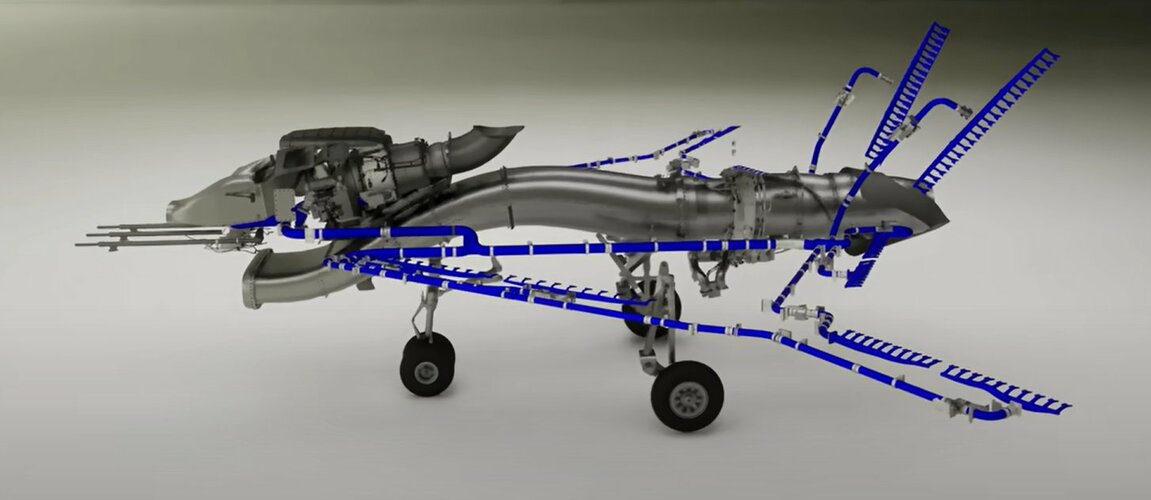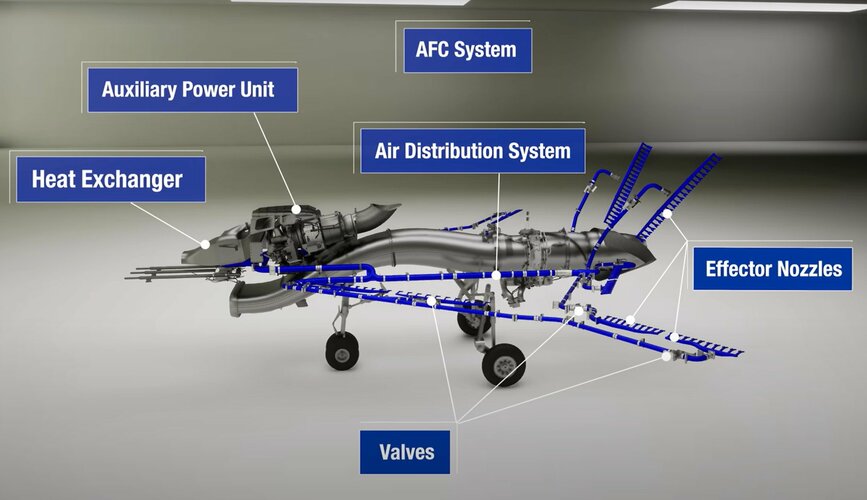CRANE will be the first full-scale experimental active flow control airplane and the first to fully integrate AFC into its flight control system.
“Full-scale” was determined by DARPA as a 7,000 lbs (3,175 kg) aircraft with a 30ft (9.1m) wingspan. The wingspan is roughly equivalent to that of an F-16, but the similarity is merely coincidental Wleizen explains.
DARPA sought dimensions that provide room enough for an engine that can propel the AFC X-plane to speeds of up to Mach 0.67 (around 500mph/800km/h) and demonstrate airplane-representative Reynolds numbers – dimensionless quantities that help predict fluid flow patterns in different situations. AFC has been done at model scale Wleizen says, “But it behaves differently at a lower Reynolds number than it does at full scale.”
[...]
“We have tried to conceive a demonstrator that can accommodate all types of active flow control in a diverse range of aircraft planforms and uses for AFC, whether for high-lift, flight control or other objectives,” says Aurora’s government programs lead, Graham Drozeski.
The X-plane will have three levels of configurability. The first arises from its co-planar shape which incorporates different wing sweep angles within one airframe. The forward wing section has a 55˚ sweep, the trailing outer wing has a 30˚ sweep, and the aft empennage-wing has a 20˚ forward-sweep. The design’s vertical tails have yet another sweep angle.
“Those four different flying surfaces all represent different aero elements that we characterized during the tools-design process and we built them into the X plane,” Uleck says.

Is active flow control the next step in flight controls? | Aerospace Testing International
Active Flow Control could become an important tool in the aerospace engineer’s toolbox
 www.aerospacetestinginternational.com
www.aerospacetestinginternational.com







